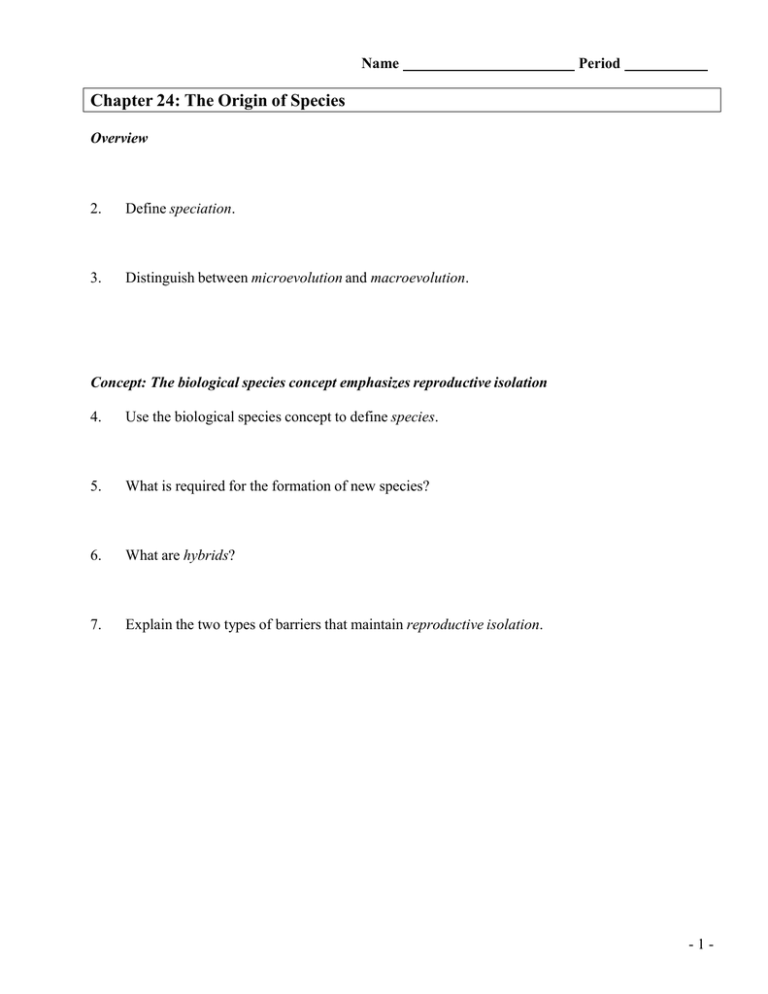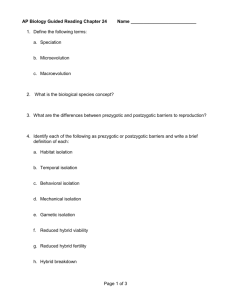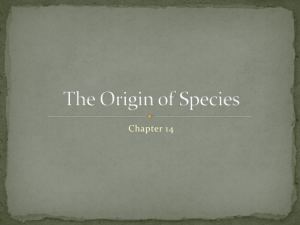
Name
Period
Chapter 24: The Origin of Species
Overview
2.
Define speciation.
3.
Distinguish between microevolution and macroevolution.
Concept: The biological species concept emphasizes reproductive isolation
4.
Use the biological species concept to define species.
5.
What is required for the formation of new species?
6.
What are hybrids?
7.
Explain the two types of barriers that maintain reproductive isolation.
-1-
8.
The following charts summarize the various ways that reproductive isolation is maintained.
Explain and give an example of each type of isolating mechanism.
Prezygotic Reproductive
Barriers
Explanation
Example
.
Habitat isolation
Temporal isolation
Behavioral isolation
Mechanical isolation
Gametic isolation
Postzygotic Reproductive
Barriers
Explanation
Example
Reduced hybrid viability
Reduced hybrid fertility
Hybrid breakdown
-2-
Concept: Speciation can take place with or without geographic separation
9. What type of speciation is caused by a barrier such as the Grand Canyon?
10. Sympatric speciation occurs in populations that live in the same geographic area. How is this
possible?
11. Some terms you must understand are polyploidy, habitat differentiation, and sexual selection.
These are not easy concepts to understand, so let’s spend some time with each of them.
(***Use drawings, if possible)To begin, explain autopolyploidy.
12.
13.
Now, explain allopolyploid speciation
Before we leave allopatric and sympatric speciation, explain what happens in sexual selection,
and how this process can drive sympatric speciation.
Concept: Speciation can occur rapidly or slowly, and it can result from changes in few or many
genes
14.
Stephen Jay Gould and Niles Eldredge coined the term punctuated equilibria. What is meant by
a punctuated pattern? Sketch a diagram of what a punctuated pattern would like below.
***Add any additional notes you take to the back. Also, write down any links to websites you access
for videos, pictures, or further explanations. Also, try the questions in the back of the chapter.
-3-







